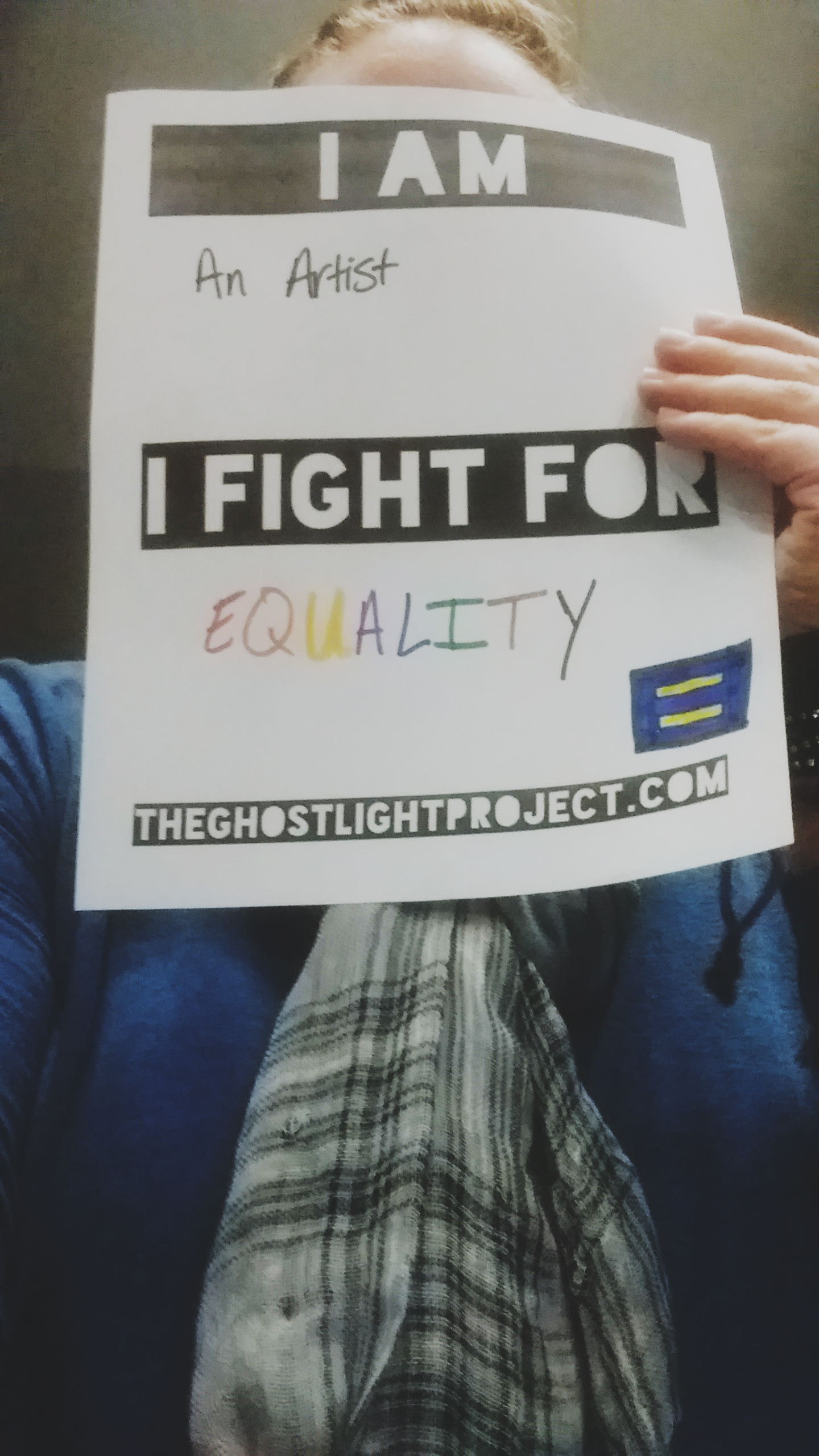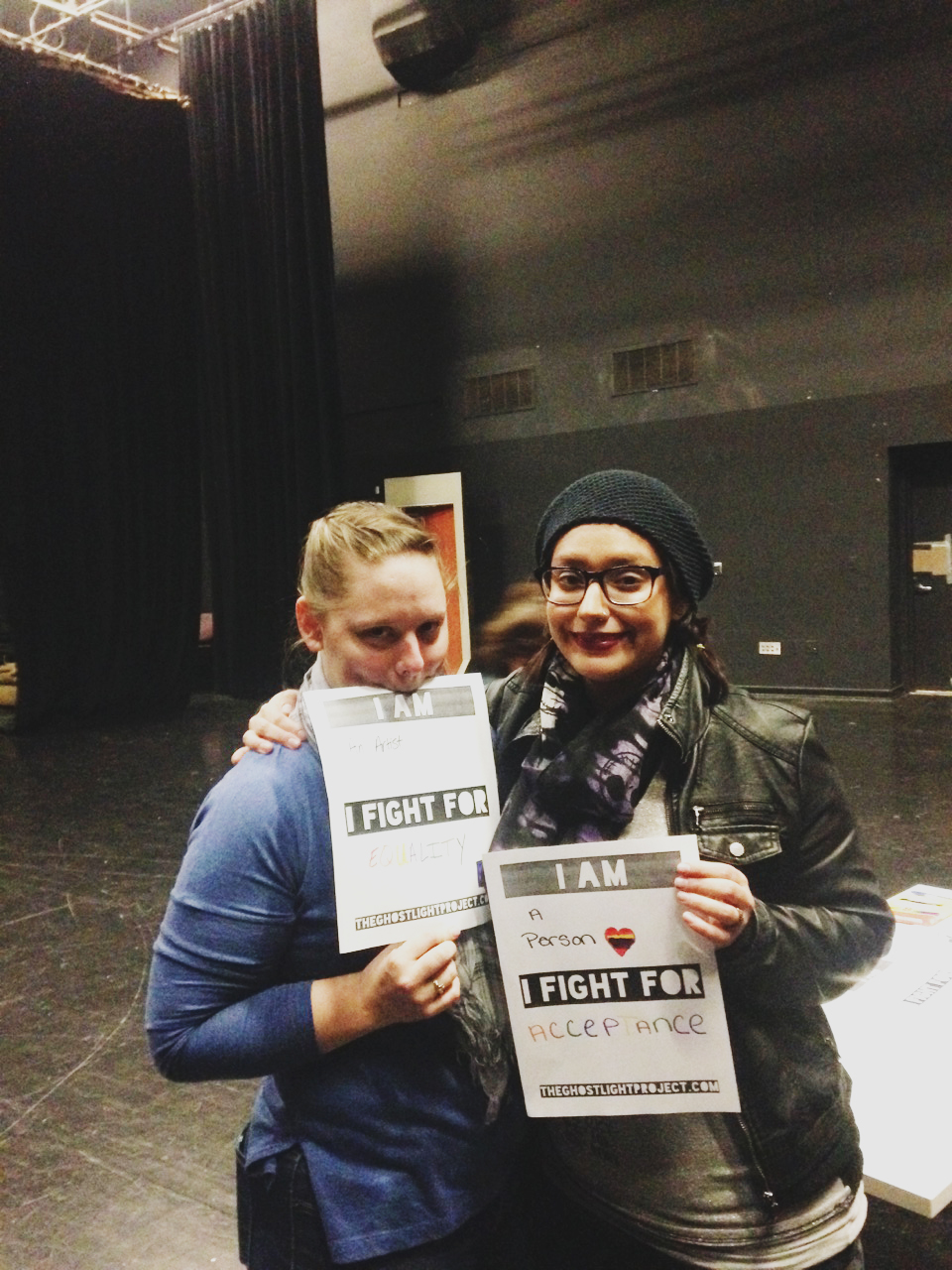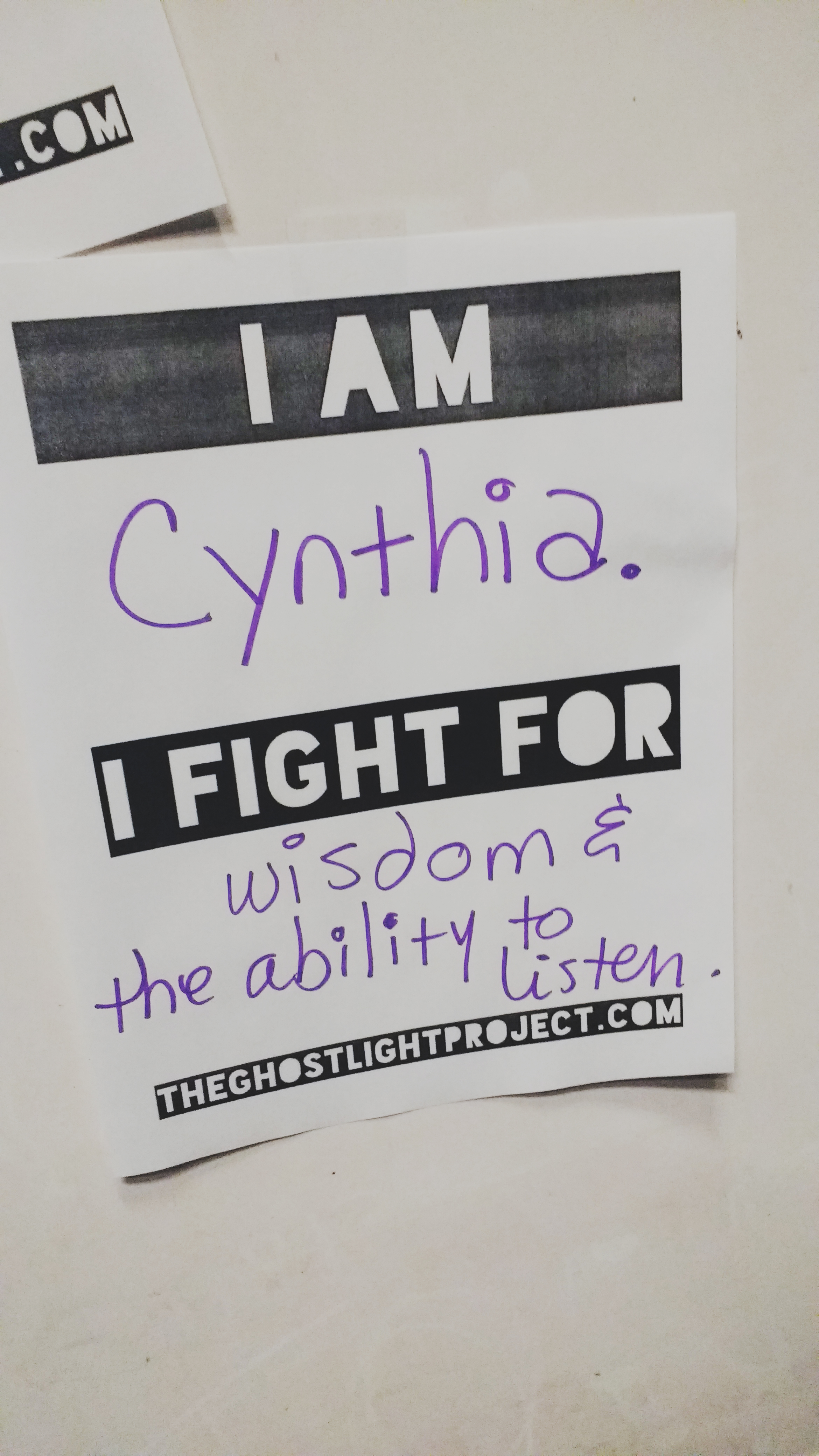We recently sat down with David Warner, PVCC student and visual artist to discuss his work, his experience at PVCC and his creative process. David's colorful, symbolic paintings explore themes of loss and gain, perseverance, and the search for one’s own integrity and truth. He expresses these ideas through a combination of abstract and surreal elements.
"Rebirth"
"Taking the Dark to Light"
When did you know you were an artist?
I started drawing when I was about 3 years old. At the time it was something that I really enjoyed and lost myself in. At one point when I was about 5 or 6 I remember vividly experiencing this physical and spiritual rush of excitement. It was around this point that I realized I loved drawing. Around the same age I was drawing Biblical stories, scenes from Moby Dick, whales and scenes from movies such as “Jaws”, “Indiana Jones” and others. I was also interested in acting and directing for a long time and that deep passion has stayed with me as I’ve gotten older.
How did you begin painting?
I first started painting seriously about 4 or 5 years ago. From a very early age I was very invested in drawing with pen and graphite before people started continuously encouraging me to use color in my work (something I was initially resistant to). I first tried oil painting when I was a senior in High School: there one was one night when I decided to bring a canvas and paints home and I painted for about 4 or 5 hours. It was that night that I realized oil painting was my passion. For some reason, the blending, the application and feel of the paint made so much sense to me and I was able to pick up the process very quickly.
"The Plants Never Worry About Blooming"
"The Thing That Makes Me Slow Is The Thing that Makes Me Drive"
Are you attracted to any other visual forms of art?
Yes. Around the same time that I picked up drawing at a young age, movies were another thing that I absolutely loved and obsessed over. To this day, I am a very committed and passionate film-watcher.
How do you decide what you will paint?
Currently it is something that just comes to me. These days I just sit down in front of the canvas and let it loose. Right now I am invested in bringing several ways of painting something (aesthetically and technically) into a singular painting. Creativity is something that is always there, but on some days I feel it strongly and on other days I struggle to really tap into it. When I first started oil painting around 2012-2013 I would draw and sketch out the idea a few times before I would finally commit it to canvas. For the past year I have been working on a process where I start painting an image that is planned out and I destroy it (usually out of frustration) by painting over it with an abstract field. Once the painting dries, I got to it again and fully flesh out my idea. Sometimes it’ll take a couple of months to fully finish a painting, so I try to have a few going during the same time. My process is always evolving and changing and I try my best to go with it.
"Speaking To You is Like Breathing"
"Watcher of Thought"
What are your influences?
My influences span from movies, music and painting to psychology, spirituality and day-to-day experiences. My earlier influences came from film, but at around the same time I was exposed to painters such as Salvador Dali and Renee Magritte whose work had a tremendous impact on me. For about 3 or 4 years I would hole up in my room and study works by Vincent Van Gogh, Wassily Kandinsky, Jean Michel-Basquiat, Henri Matisse, Caravaggio, Pablo Picasso, Milton Avery and Jackson Pollock among many others. Recently, musicians such as Aphex Twin and John Frusciante have profoundly impacted and spurred on the way I express myself. Film directors such as Paul Thomas Anderson, Michael Mann, John Carpenter and Danny Boyle have always had a special place in my heart. My art professor, Adria Pecora has had a tremendous impact on me during my stay at Paradise Valley Community College. Her versatility, talent and insight as an artist really helped me improve as an artist. She has a way of approaching the creative process and articulating the ideas behind the process that I really admire and look up to.
What is the most difficult aspect of your creative process?
I think that one of the more difficult things about the creative process is not over-thinking it. I have noticed that having expectations for my art is something that does not work for me at this point in my journey. If I approach the canvas with a specific idea that is already mapped out, I struggle to maintain interest. At this point, the creative process has a mind of its own and if I am fortunate enough to organize all of these things in my head without forcing it at the right time, I am truly satisfied. The old cliché “organized chaos” rings true for me. Part of the creative process is relaxing into the frame of mind where thoughts fade and you loosen your grip on control. When you reach that point, the creativity just pours out. So, the difficult part is relaxing and going with it, not against it.
"Past, PRESENT, Future"
What is the most rewarding aspect?
Drawing and painting is always something I have done to find a quiet place where everything makes sense to me. As I have gotten older, I have found that the creative process is inseparable from my spirituality and faith. Painting allows me to explore myself spiritually and connect with God. I feel that I can truly explore my thoughts and emotions and express these things through painting and drawing. It's my way of connecting and communicating to other people. At this point in my artistic journey, connecting with other people is the other most rewarding aspect. If I can communicate myself to people and have an emotional reaction and response, I feel that I have done my job as an artist.
"Sea of Frequency"
What would you change about your talents if you could?
I still have that voice that comes up and says, “You can do this better, why can’t you do THAT? What is not working in this painting?” I find that that critical voice can really push me to improve as an artist, but I still have to remind myself to appreciate and love what I do paint. I think most artists are like this. I want to find that balance of being objective and improving my craft but also appreciating and loving what I am doing. On a lighter note I would love to be able to play and create music. It is something that I have absolutely no channel to.
What has been your experience at PVCC?
I have had an absolutely incredible, life-changing experience at this school. For a while I was lost and not sure as to what path to take in my life. All of my classes at this institution have been excellent and I simply enjoy walking the campus and encountering the faculty and fellow students who make this whole experience unique and fulfilling.
"Nostalgic Sadness"
Describe a positive interaction with a PVCC professor.
A couple of years ago I was finally convinced to return to school after years of shrugging it off. I attended SCC and was heading toward a degree in film before I dropped out. I had been lost for about 3 years prior to the decision to return to school. During my first semester at PVCC I attended a life-drawing class taught by Adria Pecora. I was initially terrified and very within myself; I hadn’t been to school in years and I was afraid. Adria from the first week was able to bring out my passion and my desire for learning. She basically opened my mind to all sorts of new possibilities creatively and gave me a support system that to this day I am absolutely grateful for. She has been incredibly helpful and committed to me as a PVCC student. I credit her as being an integral part of my transformation as an artist and as a person. She helped guide me to where I am now. I’ll be attending the School of the Art Institute of Chicago for my undergraduate degree and she encouraged me to take those steps to achieve that goal. She wrote an amazing letter of recommendation for me and I am very grateful for all of her support. She is an amazing artist, a supportive teacher and a good friend.
"Pain and Pleasure"
Describe the group/community/class environment in your art classes.
I have found that the art classes are THE place to really engage with fellow students. Art is communication. I think the art classes offered at PVCC provide an atmosphere where students can really engage and learn about each other through expression. The whole experience is very enjoyable, supportive and therapeutic. I would highly recommend that even people who are not headed toward a degree in the Art field attend at least one class. There are many opportunities here and the professors are excellent.
You were recently featured in a gallery show at the Center for Performing Arts, how did that feel?
It felt great to represent my school. Most of my paintings if not all were gathering dust in my room and I was waiting to get them out there for people to see. The only people who were aware of them were my art professors, colleagues, friends and family. To have several of them displayed for a month was a great feeling. I was happy to be in the show alongside other PVCC student artists.
How did you select which pieces to enter?
I kind of knew immediately which pieces I wanted to put in the show, but there was some deliberation between pieces I wasn’t so sure about. I asked my family and friends to choose which pieces they liked best. I didn’t rely absolutely on their opinions, but I did take into account what they had to say. I still struggle sometimes with choosing the pieces for myself rather than relying on critiques and opinions from other people. I do consider art to belong to both the artist and the viewer, so I do take critiques objectively and I try to see how people respond to certain works. Granted, I will never change something in my work because of someone else’s opinion.
What do you hope viewers think or feel when they interact with your work?
As long as a viewer can be intrigued and interested with what I have painted, I am truly happy. I want my art to make people happy. I want people to experience a familiarity to my work that resonates with their own life. I want to connect with people on an emotional level and if I have done that I have done my job as an artist successfully.
"Memories of You"





























